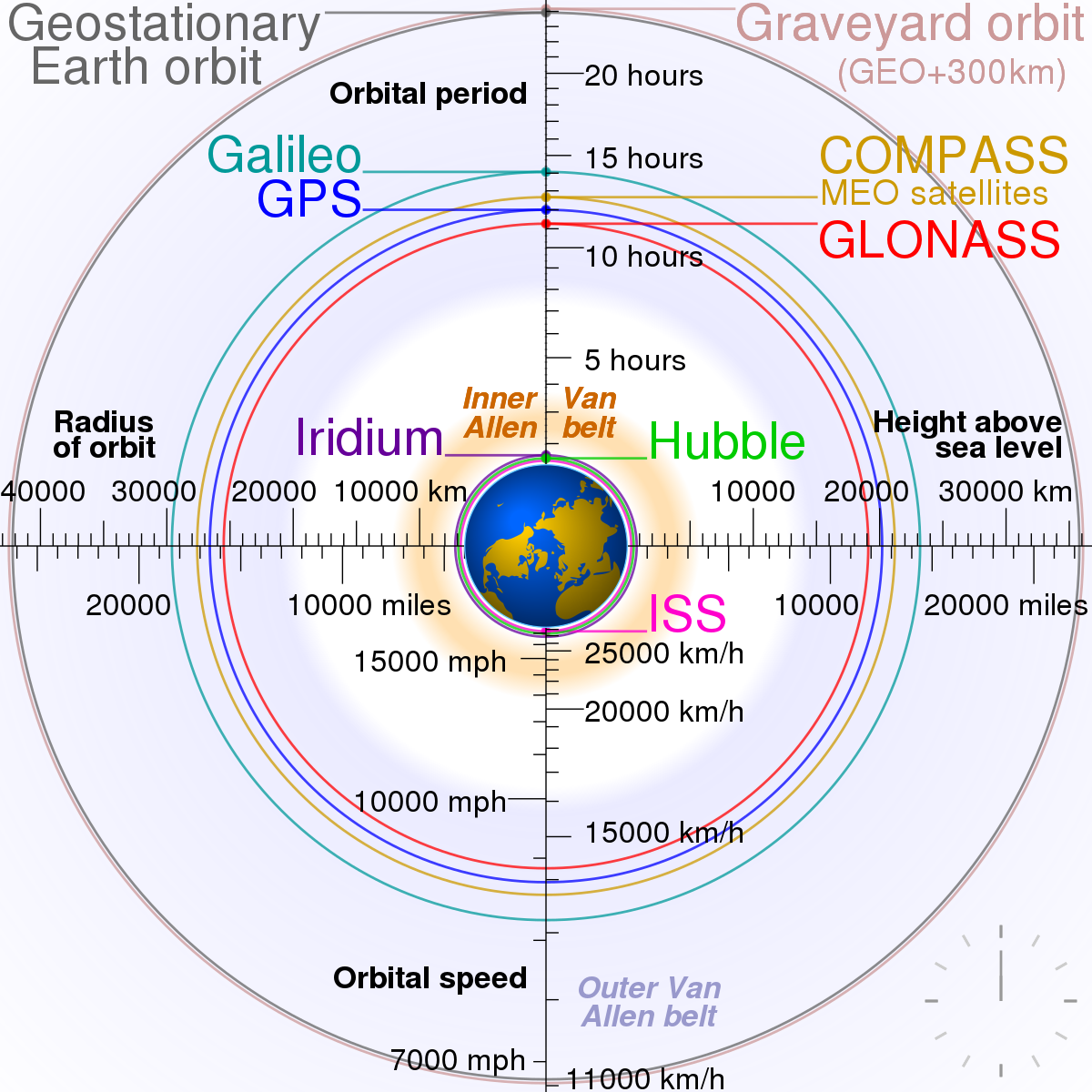General Science Notes – On – Types Of Orbits – For W.B.C.S. Examination.
সাধারণ বিজ্ঞানের নোট – কক্ষপথের প্রকার – WBCS পরীক্ষা।
A geostationary orbit, often referred to as a GEO orbit, circles the Earth above the equator from west to east at a height of 36 000 km. As it follows the Earth’s rotation, which takes 23 hours 56 minutes and 4 seconds, satellites in a GEO orbit appear to be ‘stationary’ over a fixed position. Their speed is about 3 km per second.Continue Reading General Science Notes – On – Types Of Orbits – For W.B.C.S. Examination.
Polar Orbits
The more correct term would be near polar orbits. These orbits have an inclination near 90 degrees. This allows the satellite to see virtually every part of the Earth as the Earth rotates underneath it. It takes approximately 90 minutes for the satellite to complete one orbit. These satellites have many uses such as measuring ozone concentrations in the stratosphere or measuring temperatures in the atmosphere.
Sun Synchronous Orbits
These orbits allows a satellite to pass over a section of the Earth at the same time of day. Since there are 365 days in a year and 360 degrees in a circle, it means that the satellite has to shift its orbit by approximately one degree per day. These satellites orbit at an altitude between 700 to 800 km. These satellites use the fact since the Earth is not perfectly round (the Earth bulges in the center, the bulge near the equator will cause additional gravitational forces to act on the satellite. This causes the satellite’s orbit to either proceed or recede. These orbits are used for satellites that need a constant amount of sunlight. Satellites that take pictures of the Earth would work best with bright sunlight, while satellites that measure longwave radiation would work best in complete darkness.
Geosynchronous Orbits
Also known as geostationary orbits, satellites in these orbits circle the Earth at the same rate as the Earth spins. The Earth actually takes 23 hours, 56 minutes, and 4.09 seconds to make one full revolution. So based on Kepler’s Laws of Planetary Motion, this would put the satellite at approximately 35,790 km above the Earth. The satellites are located near the equator since at this latitude, there is a constant force of gravity from all directions. At other latitudes, the bulge at the center of the Earth would pull on the satellite.
Geostationary orbit
As satellites in geostationary orbit continuously cover a large portion of the Earth, this makes it an ideal orbit for telecommunications or for monitoring continent-wide weather patterns and environmental conditions. It also decreases costs as ground stations do not need to track the satellite. A constellation of three equally spaced satellites can provide full coverage of the Earth, except for the polar regions.
Geostationary transfer orbit
This is an elliptical Earth orbit used to transfer a spacecraft from a low altitude orbit or flight trajectory to geostationary orbit. The apogee is at 36 000 km. When a spacecraft reaches this point, its apogee kick motor is fired to inject it into geostationary orbit.
Low Earth orbits
A low Earth orbit is normally at an altitude of less than 1000 km and could be as low as 160 km above the Earth. Satellites in this circular orbit travel at a speed of around 7.8 km per second. At this speed, a satellite takes approximately 90 minutes to circle the Earth.
In general, these orbits are used for remote sensing, military purposes and for human spaceflight as they offer close proximity to the Earth’s surface for imaging and the short orbital periods allow for rapid revisits. The International Space Station is in low Earth orbit.
Medium low Earth orbit
This orbit takes place at an altitude of around 1000 km and is particularly suited for constellations of satellites mainly used for telecommunications. A satellite in this orbit travels at approximately 7.3 km per second.
Polar orbits
As the name suggests, polar orbits pass over the Earth’s polar regions from north to south. The orbital track of the satellite does not have to cross the poles exactly for an orbit to be called polar, an orbit which passes within 20 to 30 degrees of the poles is still classed as a polar orbit.
These orbits mainly take place at low altitudes of between 200 to 1000 km. Satellites in polar orbit look down on the Earth’s entire surface and can pass over the North and South Poles several times a day.
Polar orbits are used for reconnaissance and Earth observation. If a satellite is in polar orbit at an altitude of 800 km, it will be travelling at a speed of approximately 7.5 km per second.
Sun synchronous orbits
These are polar orbits which are synchronous with the Sun. A satellite in a sun synchronous orbit would usually be at an altitude of between 600 to 800 km. Generally these orbits are used for Earth observation, solar study, weather forecasting and reconnaissance, as ground observation is improved if the surface is always illuminated by the Sun at the same angle when viewed from the satellite.
Please subscribe here to get all future updates on this post/page/category/website


 +919674493673
+919674493673  mailus@wbcsmadeeasy.in
mailus@wbcsmadeeasy.in







































































































